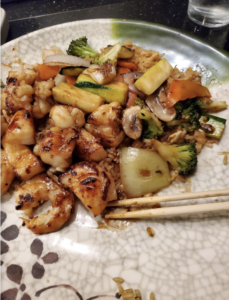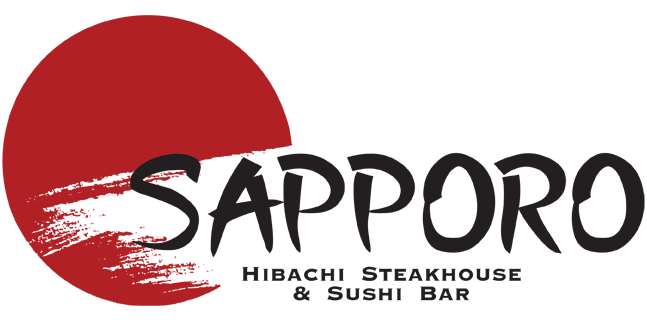
Hibachi vs. Teppanyaki: A Culinary Journey
When exploring the vibrant culinary landscape of Japanese cuisine, two standout cooking styles often come to the forefront: Hibachi and Teppanyaki.
Both offer a dynamic dining experience, yet cater to different tastes and traditions. Let’s embark on a journey to understand these fascinating cooking methods, especially as they are presented in Livonia’s renowned Sapporo Hibachi Steakhouse.
The Essence of Hibachi
Hibachi cooking, with its roots deeply embedded in Japanese history, revolves around a charcoal-heated grill. This method is celebrated for its simplicity and the ability to enhance the natural flavors of the ingredients.
At Sapporo Hibachi Steakhouse in Livonia, the Hibachi chefs are artists, transforming simple ingredients into spectacular dishes right before your eyes.
For those interested in the broader history of Japanese culinary practices, a visit to History of Japanese Cuisine provides a deeper understanding of how these traditions came to be.
It’s a fascinating read that complements the Hibachi dining experience.
In Livonia, Hibachi is not just about the food; it’s about the spectacle. The chefs at Sapporo Hibachi Steakhouse are known for their theatrical skills, flipping knives, and creating flames that dance on the grill.
This performance aspect makes dining out not just a meal but an event.
 The Art of Teppanyaki
The Art of Teppanyaki
Moving from the intimate setting of Hibachi, Teppanyaki introduces a larger iron griddle for cooking. This style is synonymous with entertainment, where chefs prepare meals on a flat surface, showcasing their culinary skills with flair and precision.
The key difference lies in the equipment and the style of interaction. Teppanyaki chefs often engage more directly with their guests, making it a highly interactive experience.
For a comprehensive guide to understanding different Japanese grilling methods, including Hibachi and Teppanyaki, Guide to Japanese Grills is an invaluable resource.
It offers insights into how these cooking styles contribute to the rich tapestry of Japanese cuisine.
In Livonia, Teppanyaki at Sapporo Hibachi Steakhouse is a communal affair, perfect for families and groups seeking an engaging dining experience. The chefs’ dexterity with utensils and their ability to cook with precision while entertaining is a testament to their skill and dedication to the craft.
Exploring Teppanyaki
Teppanyaki combines “teppan” (iron plate) and “yaki” (grilled) to create a culinary spectacle where the grill is the center stage. This style is distinct for its use of a large iron griddle, making it a popular choice for group celebrations and events in Livonia.
The essence of Teppanyaki lies in the performance. Chefs not only cook but entertain, engaging guests with their culinary skills, humor, and flair. This interactive dining experience fosters a sense of community at the table, turning meals into memorable events.
For those interested in the nutritional aspects of Japanese cuisine, including Teppanyaki, Health Benefits of Japanese Food provides valuable insights. It’s an informative read that sheds light on how these dishes contribute to a healthy diet.
Hibachi vs. Teppanyaki: The Differences
Distinguishing Hibachi from Teppanyaki starts with the equipment: Hibachi utilizes a charcoal grill for a smoky flavor, while Teppanyaki is known for its iron griddle that emphasizes the ingredients’ natural tastes.
The choice between them often hinges on the desired dining atmosphere. Hibachi is suited for more intimate gatherings, offering a cozy vibe, whereas Teppanyaki caters to larger groups with its engaging chef performances.
In Livonia, the decision between these two styles can also depend on flavor preferences. Hibachi’s charcoal grill imparts a unique smokiness to its dishes, contrasting with Teppanyaki’s approach of using lighter seasonings to highlight the freshness of the ingredients. This difference in taste profiles is a significant consideration for diners.
Whether leaning towards the intimate allure of Hibachi or the shared excitement of Teppanyaki, the city’s culinary scene, including venues like Sapporo Hibachi Steakhouse, embraces both with a dedication to authentic flavors and engaging dining experiences. The choice between Hibachi and Teppanyaki ultimately reflects personal preference for the type of journey through Japanese cuisine each diner seeks.
Choosing Between Hibachi and Teppanyaki
When it comes to picking between Hibachi and Teppanyaki, the decision often boils down to the kind of experience you’re after. Each style offers a distinct approach to Japanese cuisine, captivating diners with its own set of flavors and atmospheres.
Hibachi is the go-to for those who cherish the warmth of a grill and the cozy ambiance it fosters. It’s perfect for smaller groups seeking a personal touch, where the smoky essence of the food enhances the dining experience. This setting allows for an intimate interaction with the chef, making it ideal for special occasions that call for a memorable meal.
Teppanyaki, with its grand iron griddle, caters to those looking for dinner with a show. It’s about the flair, the skills of the chef, and the communal joy of sharing a meal. This style is best suited for larger gatherings where the entertainment is as important as the food. The open layout encourages interaction, not just with the chef but among guests, making every meal a festive event.
FAQ Section
What is the main difference between Hibachi and Teppanyaki?
The primary distinction lies in the cooking equipment and the atmosphere. Hibachi uses a charcoal grill for a smoky flavor, while Teppanyaki is prepared on a flat iron griddle, focusing on the performance of cooking.
Can I find vegetarian options in both Hibachi and Teppanyaki?
Yes, both cooking styles accommodate vegetarian preferences, offering a variety of dishes that highlight vegetables and tofu.
Is Teppanyaki healthier than Hibachi?
Both can be considered healthy, depending on the ingredients and preparation methods used. Teppanyaki might have a slight edge due to less reliance on oils and the use of fresh, high-quality ingredients.
Choosing between Hibachi and Teppanyaki doesn’t have to be a challenge. It’s all about what you value most in a dining experience—whether it’s the intimate charm and smoky flavors of Hibachi or the lively, interactive spectacle of Teppanyaki.
Each offers a unique way to enjoy Japanese cuisine, promising an unforgettable meal that caters to a variety of tastes and occasions.
